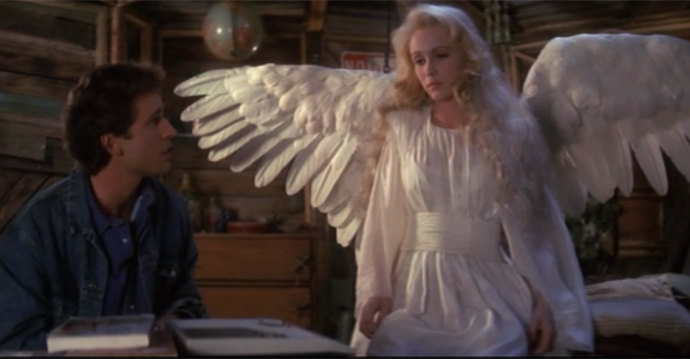“Listen up, ladies and gentlemen! Our fugitive has been on the run for 90 minutes. Average foot speed over uneven ground, barring injuries, four miles an hour, that gives us a radius of six miles. What I want out of each and every one of you is a hard target search of every gas station, residence, warehouse, farm house, hen house, out house and dog house in that area. Checkpoints go up at 15 miles. Your fugitive’s name is Dr. Richard Kimble. Go get him!” –Tommy Lee Jones as Deputy Samuel Gerard in “The Fugitive.”
I remember my first interaction with the 1993 film “The Fugitive.” I slept through most of it. My dad had taken my brother and me to the Solano Drive-in Movie Theater in the East Bay for a double feature. “The Fugitive” was the first film shown, and I lasted roughly 30 minutes before passing out and waking up in time to catch all of “Free Willy.” Hard to believe it’s been 20 years since then, and 20 years since “The Fugitive” rocketed its way to some serious theatrical success.
I also remember my dad telling me that “The Fugitive” was a television series long before it was a movie with Harrison Ford and Tommy Lee Jones. As he told it, he remembered how it took a lot longer to learn the story, characters, conflict and outcome in those days. He also told me that he had somewhat religiously followed the 1960s version until heading off to basic training, leaving him with no way to follow the show he so enjoyed save for letters his father wrote him every now and again. I never did see that version, or any other for that matter, but I can say with good certainty that the 1993 edition belongs up there with the best ever American crime dramas.
Warner Bros. is releasing “The Fugitive” again on Blu-ray disc to commemorate the film’s two decade anniversary, and it’s a fitting tribute to a film that was deeply detailed but also lighthearted every now and again. What makes the film strong now are the same things that made it strong when it was first released: excellently developed characters, a balanced script and well-paced action that ebbs and flows with ease. Engaging from the opening credits to the final scene, “The Fugitive” does just about everything right and practically nothing wrong.
Richard Kimble (Ford) is a successful Chicago surgeon who returns home from an evening fundraiser to find a man in his home and his wife Helen (Sela Ward) on the verge of death. The police arrive and mistakenly charge him with murder due. He’s convicted via a whole bunch of misplaced circumstantial evidence and sentenced to death by lethal injection. But when the bus he’s placed on to transport him to prison his hijacked by a few rogue inmates, Richard is on the run and in search of a way to clear his name.
Sent to handle the case are several Deputy U.S. Marshalls, including Gerard (Jones), Cosmo (Joe Pantoliano), Briggs (Daniel Roebuck), Newman (Tom Wood) and Poole (L. Scott Caldwell). They chase Kimble through the woods and back into Chicago, where he returns to clear his name. In searching for the man he encountered the night his wife was murdered, Kimble ducks into and out of hospitals, poses as a custodian and puts forth some clever sleuthing skills that lead him to a shocking conclusion: the killer was initially after him, not his wife. Eventually, Kimble fingers a colleague, Charles Nichols (Jeroen Krabbe), as the one who hired Frederick Sykes (Andreas Katsusulas) to take him out. The climax brings exoneration and justice, but not before a lengthy struggle in and around a Chicago hotel landmark.
Considering the story behind “The Fugitive” has been around in some form or another for over 50 years, it’s likely you’ve heard something about its characters and flow at some point. But the way director Andrew Davis makes this version work is especially clever. Jones has most of the dry, funny and witty lines, which greatly helps to offset his initially harsh exterior. Ford demonstrates his character’s strong humanity despite being victimized by the criminal justice system when he helps to save a prison guard from a bus accident and sends a little boy from the wrong hospital ward to the right one. We quickly learn how these two leads will clash with each other and push one another to their respective breaking points, but it happens in a capacity that builds and mounts at just the right speed.
The setting feels extremely appropriate for “The Fugitive.” Chicago is a city big enough for anyone to get lost in, and we watch as Ford’s character plunges from the city’s top to its bottom. The manhunt leads through the famous St. Patrick’s Day parade, on the L and into the downtown Hall of Justice. In one scene, an electric sign reads that the daytime high temperature is a balmy 23 degrees. We feel the cold and frustration of a city being far too small for one man and far too giant for another. Like most big cities, many sides are present in the Chicago where “The Fugitive” is set.
Nominated for seven Oscars, “The Fugitive” received near universal critical acclaim. Jones won for Best Supporting Actor, and while the film isn’t one that lists its accolades all over its cover art, it did make more than its fair share of top film lists for the 1990s. “The Fugitive” remains valuable because it adapted its well-cast actors around established characters and gave these individuals the ability to be creative as well as the direction to hold the course. In doing so, it placed its action and drama next to each other with strong foundations and thorough attention to detail.
The many storylines cut into one another at various points and are effective both together and on their own. All roads eventually circle back to Kimble on the run and Gerard on his trail, but as we meet each man’s professional colleagues, witnesses and accessories, we feel their separate tracks are eventually bound crash into each other. And the moments where these two men do indeed cross paths are as expected: tense, dramatic and forthright. When combined with the emphasis on drama and suspense over violence, you’re in for a solid treat.
It had been at least five years since I’d watched “The Fugitive” uninterrupted and unedited. It delivered better now than it did then, and I greatly appreciated how I still bought into the story and its development with the hope that it would reward me. That’s the sign of an effective crime film, and I’ve little doubt this is one of the best.
Video:
“The Fugitive” is presented in its original 1.85:1 ratio with an excellent 1080p High Definition video transfer. The picture is mostly clear and grain free throughout, but there are a few scenes where the coloration isn’t particularly strong (they tend to be the scenes in the city versus those out in the woods immediately after Kimble’s escape). The film’s cinematography is quite strong, especially during the scenes where characters navigate tight spaces like tunnels and laundry rooms or elevators and stairwells. The video helps to convey the emotion we’re meant to endure, and it succeeds. It isn’t a flawless transfer to Blu-ray disc, but it’s sharp nonetheless.
Audio:
What I remember best about “The Fugitive” and its audio is the soundtrack, with pulse pounding and ever so well placed and timed music that fuels the film’s adrenaline. James Newton Howard led this charge and did great work as the characters navigate one another in and around Chicago. The English 5.1 DTS-High Definition Master Audio soundtrack is strong with few flaws, as all lines are emotional and easy to pick up. Natural background noise is well-used, as everything from footsteps to gunfire to car engines and then some can be detected. Additional audio choices are Spanish (both Castillian and Latin) 5.1s, while English, French and Spanish subtitles are available.
Extras:
Quite a bit to throw under the microscope here, including an introduction by director Davis and Ford, an audio commentary by Davis and Jones, two documentaries (one of which is about the train wreck), the theatrical trailer, a pilot episode of the 2000 TV series “The Fugitive” and a featurette called “The Fugitive: Thrill of the Chase.” I would have appreciated a compare and contrast sort of deal that looked at earlier versions of the story and compared it with the one at hand.
A Final Word:
This is strong filmmaking that keeps its moxie going full speed, and with “The Fugitive,” you’re in story for a variety of good elements all combining together in just the right way. A powerful cat and mouse pursuit, “The Fugitive” seems to have not just stayed strong, but rather gotten better with age.


